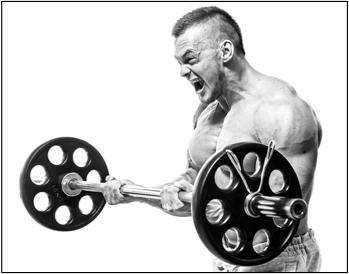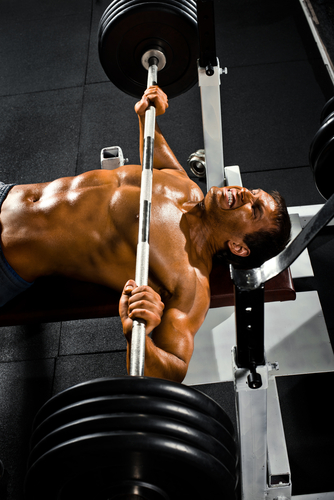[fusion_builder_container hundred_percent=”no” equal_height_columns=”no” menu_anchor=”” hide_on_mobile=”small-visibility,medium-visibility,large-visibility” class=”” id=”” background_color=”” background_image=”” background_position=”center center” background_repeat=”no-repeat” fade=”no” background_parallax=”none” enable_mobile=”no” parallax_speed=”0.3″ video_mp4=”” video_webm=”” video_ogv=”” video_url=”” video_aspect_ratio=”16:9″ video_loop=”yes” video_mute=”yes” video_preview_image=”” border_size=”” border_color=”” border_style=”solid” margin_top=”” margin_bottom=”” padding_top=”” padding_right=”” padding_bottom=”” padding_left=””][fusion_builder_row][fusion_builder_column type=”1_1″ layout=”1_1″ spacing=”” center_content=”no” hover_type=”none” link=”” min_height=”” hide_on_mobile=”small-visibility,medium-visibility,large-visibility” class=”” id=”” background_color=”” background_image=”” background_position=”left top” background_repeat=”no-repeat” border_size=”0″ border_color=”” border_style=”solid” border_position=”all” padding=”” dimension_margin=”” animation_type=”” animation_direction=”left” animation_speed=”0.3″ animation_offset=”” last=”no”][fusion_text]
There are four main phases of training that you must periodize for optimal growth and body composition.
Yes, they lie on a continuum and there can be some overlap depending on how your training is set up, but here are the basics of each so that you understand the demands they place on your body. More importantly, so that you realize why it is important to strategically cycle each phase of them for best results.
Neurological Training Phase
High intensity neurological training requires the nervous system and neuromuscular junctions to function at peak levels of performance. This requires the neurotransmitters dopamine and acetylcholine to be elevated and functioning. These two neurotransmitters help you coordinate more muscle fibers, and contract them more intensely.
 High intensity contractions are also easier to achieve when your muscle glycogen levels are adequate. When you are depleted your body sees high intensity training like shopping for designer watches when you can’t afford the groceries. You will not get the same intensity in a depleted neurotransmitter or metabolic state.
High intensity contractions are also easier to achieve when your muscle glycogen levels are adequate. When you are depleted your body sees high intensity training like shopping for designer watches when you can’t afford the groceries. You will not get the same intensity in a depleted neurotransmitter or metabolic state.
This sounds simple enough but it’s more complicated than that. On one hand high insulin suppresses dopamine leading to decreased intensity of contractions. On the other hand low glycogen levels in the muscle will also lead to less intense contractions. In other words, you need muscle glycogen, but also lower levels of insulin. This means you need to time your carbohydrates and dose them appropriately. This is nearly impossible if you don’t have your insulin sensitivity in check. The worse your insulin sensitivity, the more insulin it takes to get muscle glycogen up.
Because of the heavy lower rep training used for this stimulus, there is much less of a metabolic demand during the workout, so it’s easy to overdue intra workout carbohydrates. You actually don’t burn a ton of the glucose with neurological training compared to hypertrophy or metabolic training, but low muscle glycogen will still drastically affect performance.
[/fusion_text][fusion_text]
Hypertrophy Training Phase
Hypertrophy training can be very metabolically demanding depending on the amount of volume you currently need. With metabolic training it’s all about fueling long sets, in the hypertrophy phase we are concerned about fueling long workouts. This means there is a greater opportunity for fat to be used to help restore ATP levels between sets, making the workout less carb dependent than a pure lactic workout.
 The biggest shift in nutrient intake has less to do with fuel burned as it does tissue broken down. Higher volume work is going to result in the increased breakdown of proteins. It is the ratio of broken down proteins to metabolic waste that ultimately decides whether each muscle cell is going to focus on growing new contractile tissue or focus on replenishing more fuel. The more amino acid signaling and the less depleted glycogen levels, the more likely you will stimulate the mTOR pathway for protein synthesis.
The biggest shift in nutrient intake has less to do with fuel burned as it does tissue broken down. Higher volume work is going to result in the increased breakdown of proteins. It is the ratio of broken down proteins to metabolic waste that ultimately decides whether each muscle cell is going to focus on growing new contractile tissue or focus on replenishing more fuel. The more amino acid signaling and the less depleted glycogen levels, the more likely you will stimulate the mTOR pathway for protein synthesis.
[/fusion_text][fusion_text]
Metabolic Training Phase
The metabolic phase is the thirstiest phase for all sources of fuel. While you do burn more fat in metabolic phase, you also burn more carbohydrates, and (if not done right) even protein. The key benefits from a metabolic phase are mostly from the burning of carbohydrates for fuel, and the cellular adaptations that happen when carbohydrate stores get low.
 The body adapts to the high amounts of metabolic waste you make during training. It senses fuel consumption, and can turn on genes to improve efficiency when it sees that you are burning a lot of fuel. This is what leads to our increased number of mitochondria. When you burn glucose for fuel, you create lactate as a byproduct, and this affects not only the muscle, but also impacts your body on a systemic level. Excessive lactate is pushed out of the muscles and fed to the liver. This is what creates the cascade of events that leads to growth hormone release after lactic training. Growth hormone is a key signaling hormone in shifting the metabolism of cells and organs in your body.
The body adapts to the high amounts of metabolic waste you make during training. It senses fuel consumption, and can turn on genes to improve efficiency when it sees that you are burning a lot of fuel. This is what leads to our increased number of mitochondria. When you burn glucose for fuel, you create lactate as a byproduct, and this affects not only the muscle, but also impacts your body on a systemic level. Excessive lactate is pushed out of the muscles and fed to the liver. This is what creates the cascade of events that leads to growth hormone release after lactic training. Growth hormone is a key signaling hormone in shifting the metabolism of cells and organs in your body.
The effectiveness of a metabolic phase is all about burning fuel, especially glucose, this means you need to have a supply either intra-workout or stored glycogen. When you are depleting your muscles and liver, the intra workout carbohydrate become even more important unless you are trying to get to complete depletion. By burning out all the fuel in the muscle, different genes activate that will upregulate the usage of fat for fuel. This is very important when fat loss is a part of the goal of your metabolic training. But once you’re empty, you will need to either change the phase or provide a source of glucose for training sessions to continue to see results.
However, staying in the phase too long can ultimately stall your progress. Know the signs of when to switch phases for best long-term progress.
[/fusion_text][fusion_text]
Primer Training Phase
 Primer phases are not particularly demanding of any fuel sources. That being said, it is easier to get a pump and feel a muscle when it has some glycogen as opposed to being depleted. As your execution and mind muscle connection becomes better, you can feel the muscle better in greater states of depletion.
Primer phases are not particularly demanding of any fuel sources. That being said, it is easier to get a pump and feel a muscle when it has some glycogen as opposed to being depleted. As your execution and mind muscle connection becomes better, you can feel the muscle better in greater states of depletion.
A primer phase should be looked at almost like a neurological phase, in that you want to have some glycogen to make it easier to feel the muscle. However, you also don’t want too much insulin, because it will take away your focus. Getting quality amino acids and fats to fuel your brain and muscle is a better way to get high quality contractions and improve execution during the primer phase. Think about using BCAAs and MCTs to spare glycogen levels during training and fuel the brain.
Summary:
Each type of training phase has very different demands from a nutritional perspective as well as the physical demands they place on your body. Learning to appropriately time your carbohydrates and cycle your nutrition based on the type of training is critical to being able to make the most progress in each phase. Controlling your nutrition to match training will allow you to take control of your hormones, training performance, and recovery for maximum results.
[/fusion_text][fusion_text]
Click below to see the nutritional cycling strategies I use for myself and my clients for consistent muscle gain and improved body composition throughout every phase of training:
[/fusion_text][fusion_imageframe image_id=”7674″ style_type=”dropshadow” stylecolor=”” hover_type=”liftup” bordersize=”” bordercolor=”” borderradius=”” align=”center” lightbox=”no” gallery_id=”” lightbox_image=”” alt=”bulkbanner” link=”http://muscleexpt.pakman00.hop.clickbank.net/?pid=bulk&tid=learnphases” linktarget=”_blank” hide_on_mobile=”small-visibility,medium-visibility,large-visibility” class=”” id=”” animation_type=”” animation_direction=”down” animation_speed=”0.4″ animation_offset=””]https://www.benpakulski.com/wp-content/uploads/bulk-banner-new-2-1024×207.png[/fusion_imageframe][/fusion_builder_column][/fusion_builder_row][/fusion_builder_container]